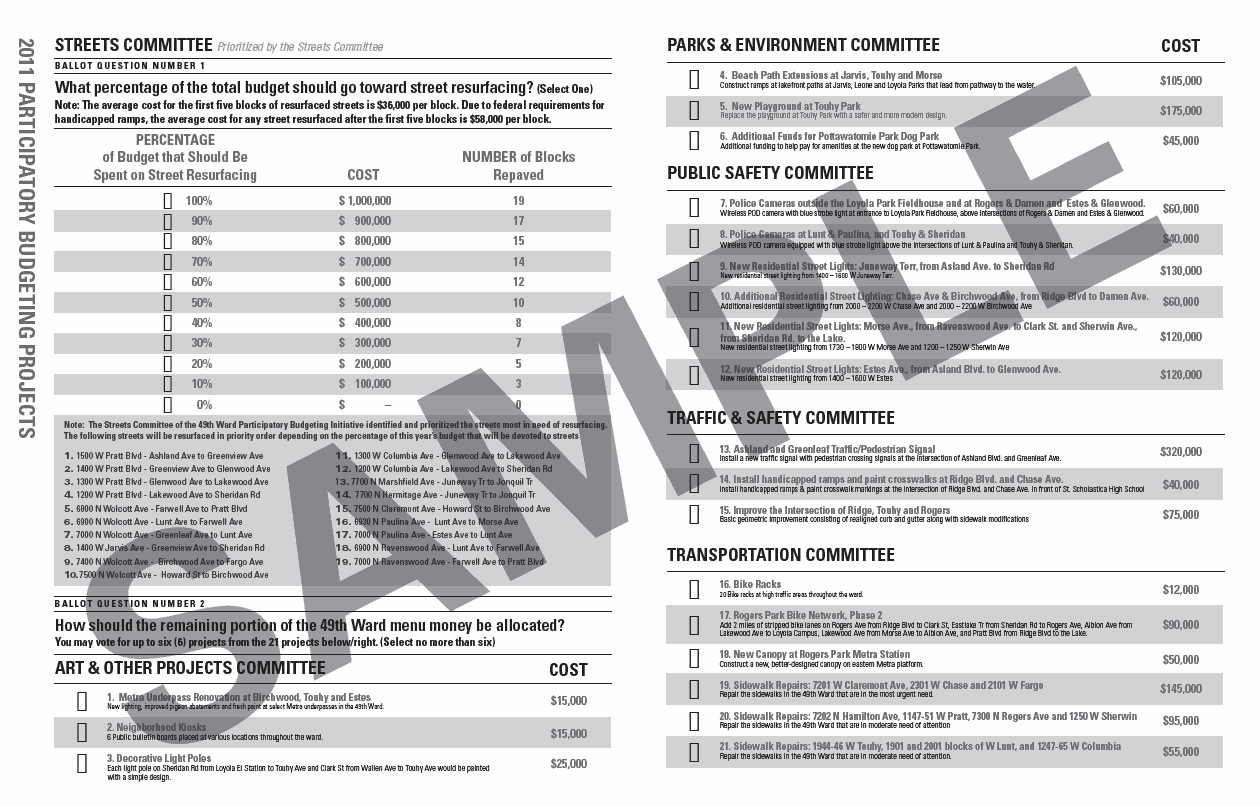|
Different uses for voting
need different types of voting. |
 |
Chicago's 2011 PB Ballot |
 |
Ballot for Participatory Budgeting in ChicagoThere are serious problems in using old voting systems to set budgets. Analysis: Below is the May 2011 ballot for Participatory Budgeting in Chicago's 49th ward. The instructions in the gray box above the ballot imply the 2 tally methods: averaging and plurality. The averaged votes for street resurfacing invite low strategic votes by those who want money left to fund other projects. To lower the resulting average, a voter would mark “0%” even if he or she wants some resurfacing. Using the median vote would avoid this problem. No one can tell which plurality rule will be used, bloc vote or limited vote. That will depend on 1) the amount of money left after road repairs and 2) the costs (and therefore the number) of winning projects. Bloc voting tends to exclude minority interest groups from winning. So it has been ruled illegal in some federal voting-rights cases. Limited voting tends to be semi-proportional. But any group, even a majority, can lose everything if they divide their votes among too many proposals. Six Equal Votes: Your sixth vote counts as much as your first choice.
Unequal Ballots: Worst of all, your 6 votes probably do not equal the cost or value of my 6 votes.
It can motivate leaders to seek a wider appeal by combining projects. Our previous page showed the Chicago winners. And it showed that some losers got more votes per dollar than some winners — those losers were more cost effective at attracting support than the winners. |
Ballot for Participatory Budgeting in Chicago
“
This year, you will be asked to vote on two separate ballot questions.
|

|
Participatory Budgeting is a big improvement over the old ways of finding and selecting local projects worth funding. The Chicago results would have been better if the same ballots went through a cost-aware tally. The cost-aware tallies using these bloc-vote ballots is just one of several steps toward the really efficient use of money that they could get through fair-share spending.
|

|
|




 Accurate Democracy
Accurate Democracy 







